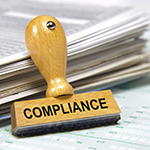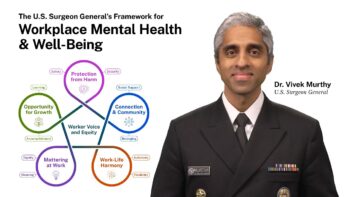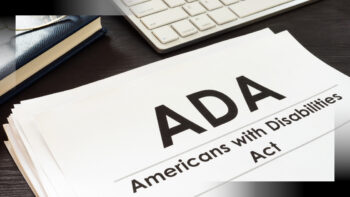The OSHA Recordkeeping Standard requires you to record and potentially report work-related illnesses and injuries. Reporting of illnesses and injuries is also crucial to investigating, identifying and correcting problems that can lead to further incidents and OSHA violations. So, it’s crucial to establish a policy and procedure for workers to report workplace injuries and … [Read more...] about TOOL: Model Employee Illness/Injury Reporting Policy
Workplace Safety
How to recognize and deal with burnout
Here are some tips for medical office managers on why they might suffer burnout, how to recognize it, and what they can do to prevent and deal with it. Understand the causes of burnout: Burnout is a form of chronic stress that results from prolonged exposure to job demands that exceed a person's resources. For medical office managers, burnout can stem from factors such as … [Read more...] about How to recognize and deal with burnout
Office safety inspection checklist
The best checklist for your workplace is one that has been developed for your specific needs. The examples outlined below do not list all the possible items for office inspections. Whatever the format of the checklist, provide space for the inspectors’ signatures and the date. Inspectors: Date: (O) Satisfactory (X) Requires … [Read more...] about Office safety inspection checklist
COMPLIANCE: A 10-step compliance strategy for OSHA Recordkeeping Rules
January is the season when employers must compile their OSHA logs for the previous year. Here’s an overview of the OSHA Recordkeeping Standard and a 10-step strategy to ensure compliance. Step 1: Figure out if your office is covered Physician offices are among the industries listed by North American Industry Classification System (NAICS) as being partially exempt from the … [Read more...] about COMPLIANCE: A 10-step compliance strategy for OSHA Recordkeeping Rules
4 proven ways to increase handwashing
Everyone knows handwashing reduces the transmission of illness. Why then is it so difficult to get staff to comply? Experts recommend four strategies to promote handwashing. 1. Make handwashing part of your practice's culture. 2. Make handwashing part of employee performance evaluation. 3. Make handwashing convenient. 4. Make handwashing pleasant. The importance of … [Read more...] about 4 proven ways to increase handwashing
What, if anything, does OSHA require you to do to protect telecommuters?
While telecommuting is nothing new, the imperative for using it has never been greater. In addition to all the cost-saving, work-life balance, recruiting and hiring advantages, letting employees work from home during a pandemic has become a vital infection control measure. But it also poses significant compliance challenges, particularly in the realm of OSHA. After all, how are … [Read more...] about What, if anything, does OSHA require you to do to protect telecommuters?
To avoid a messy workplace theft investigation, can we just fire our prime suspect?
By Lynne Curry Question: Several years ago, when one of our employees was stealing from other employees’ purses and lockers, we called the police. The process — calling the police, alerting our insurance carrier and interviewing multiple employees to show fairness so we wouldn’t get sued for wrongful termination when we fired the one employee — tore apart our … [Read more...] about To avoid a messy workplace theft investigation, can we just fire our prime suspect?
Five essentials to support employee mental health and well-being
Events of the last four years have changed the nature of work for many and the relationship that some workers have with their jobs. The Surgeon General’s Framework for Mental Health & Well-Being in the Workplace outlines the foundational role that workplaces should play in promoting the health and well-being of workers and communities. With more than 160 million … [Read more...] about Five essentials to support employee mental health and well-being
What does the Americans with Disabilities Act require of your medical office?
The Americans with Disabilities Act (ADA) requires medical offices to make reasonable modifications to their policies, practices, and procedures to accommodate the needs of individuals with disabilities, unless doing so would create an undue burden or fundamentally alter the nature of the services provided. This includes ensuring that the facility is physically accessible to … [Read more...] about What does the Americans with Disabilities Act require of your medical office?
7 tips for a safe winter commute
In the best of winters, driving to and from the office can be challenging. This winter is becoming downright dreadful in many parts of the country. Snow, ice, and cold weather can all create hazardous conditions on the road, and it is important to take extra precautions to ensure the safety of yourself and others. Here are tips for winter driving safety for you and your … [Read more...] about 7 tips for a safe winter commute









